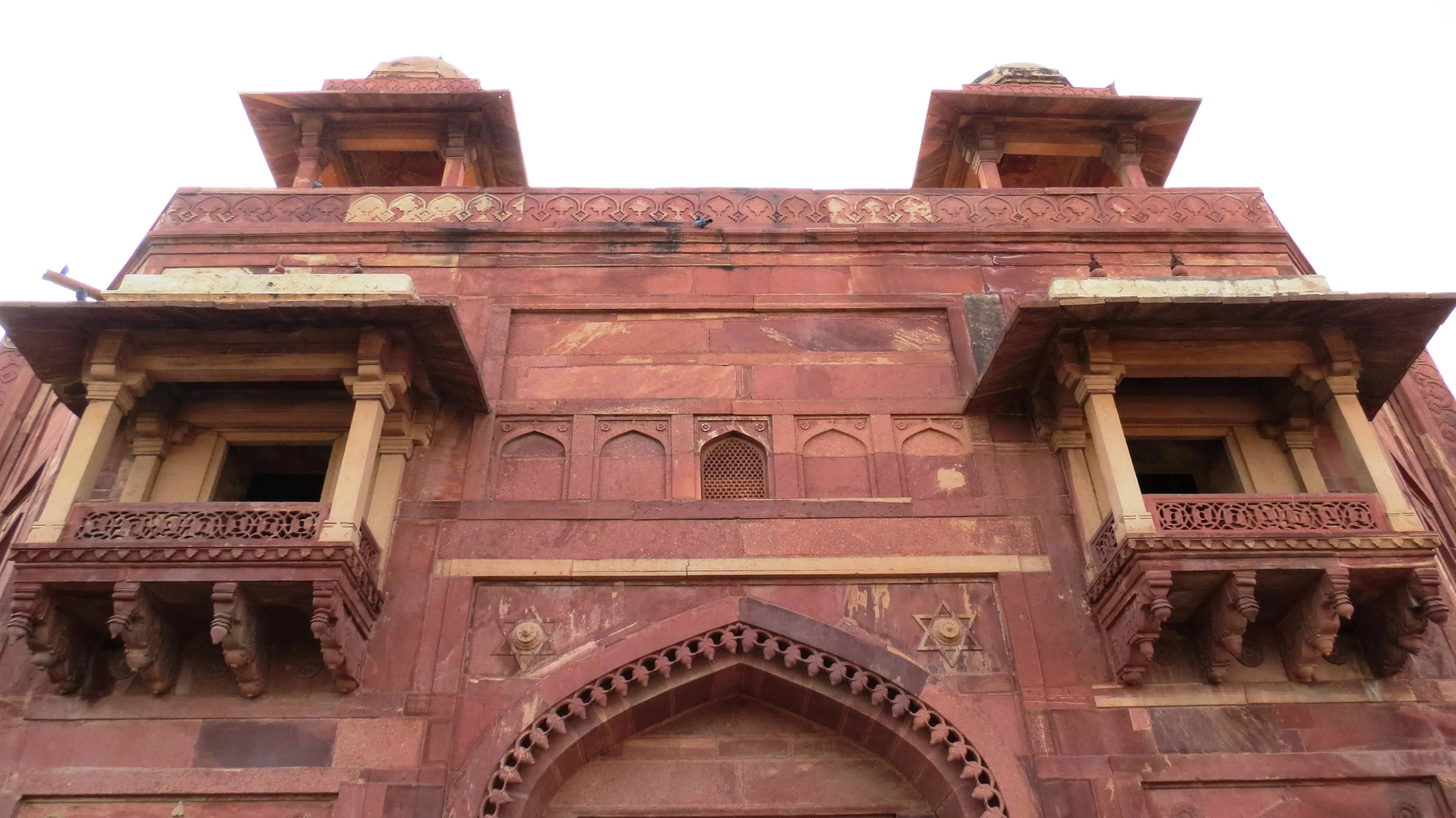
Help Preserve Jodha Bai Palace Fatehpur Sikri
Jodha Bai Palace Fatehpur Sikri matters. Not just as a tourist spot, but as actual living history. Your money goes straight to keeping it standing—documentation, repairs, community programs.
80G Tax Benefits on Every Donation
Your contribution is eligible for 50% tax deduction under Section 80G. Transparent operations with 100% fund utilization guarantee.
👇 Donate directly below with instant 80G certificate
3D scans and photos so if something breaks, we can rebuild it exactly right. Plus it creates a permanent digital record.
Actual physical work—fixing cracks, cleaning surfaces, stopping water damage before it gets worse.
Local engagement, awareness programs, and sustainable heritage tourism development.
Cultural Significance
Jodha Bai's Palace within the deserted city of Fatehpur Sikri stands as a powerful testament to the socio-political and artistic climate of Akbar's reign (1556-1605). While its popular association with Jodha Bai, a Rajput princess and Akbar's wife, has been contested by historians, the palace's architectural language speaks volumes about the Mughal emperor's vision of a syncretic empire and his efforts to foster Rajput alliances. Its significance lies not just in its physical structure but also in its symbolic representation of cultural integration and the evolving architectural landscape of the time. Built during the Rajput period, a time marked by both conflict and alliances between the Mughals and Rajput kingdoms, the palace showcases Akbar's astute understanding of the power of architectural symbolism. By commissioning a structure that blended diverse architectural vocabularies, he communicated a message of acceptance and respect for Rajput traditions. This was a crucial strategy for consolidating his power and ensuring the stability of his vast empire. Marrying a Rajput princess was a significant political move, and the palace, regardless of its specific occupant, became a symbol of this union. The architectural style of Jodha Bai's Palace is a fascinating example of the Indo-Islamic synthesis that characterized Mughal architecture. While firmly rooted in the prevailing Mughal aesthetic, it incorporates distinct elements borrowed from Rajput and Gujarati architectural traditions. This fusion is evident in the use of chhatris (domed pavilions), jharokhas (overhanging enclosed balconies), and intricately carved brackets, features commonly found in Rajput palaces. These elements are seamlessly integrated with characteristically Islamic features like arches, vaults, and geometric patterns, creating a unique architectural vocabulary that reflects the cultural confluence of the era. The palace's location within the planned city of Fatehpur Sikri further enhances its significance. Akbar built Fatehpur Sikri as his new capital, a city that embodied his vision of a harmonious society. The placement of Jodha Bai's Palace in close proximity to the imperial complex underscores the importance Akbar placed on his Rajput alliances. It also suggests the high status afforded to the Rajput queen within the Mughal court. The palace's relative seclusion, however, also hints at the continued importance of maintaining separate cultural identities within this blended society. The interior of the palace offers further insights into this complex interplay of cultures. The private spaces, such as the bedrooms and living quarters, are designed with features that resonate with Rajput sensibilities, offering a sense of familiarity and comfort. The public areas, on the other hand, display a more pronounced Mughal influence, reflecting the ceremonial and political functions they served. This spatial organization reflects the delicate balance Akbar maintained between acknowledging Rajput traditions and asserting Mughal dominance. Comparing Jodha Bai's Palace with other structures within Fatehpur Sikri, such as the Panch Mahal or the Buland Darwaza, reveals the nuanced approach Akbar took towards architectural expression. While these other structures showcase the grandeur and power of the Mughal empire, Jodha Bai's Palace exhibits a more intimate and personalized style, reflecting its function as a residential space. This contrast highlights Akbar's ability to adapt architectural styles to suit different purposes and audiences, further demonstrating his political acumen and artistic sensibility. In conclusion, Jodha Bai's Palace is not merely a beautiful building; it is a historical document etched in stone. It offers a glimpse into the complex social and political dynamics of Akbar's reign, showcasing his vision of a unified empire built on cultural exchange and strategic alliances. Its unique architectural style, a fusion of Mughal, Rajput, and Gujarati elements, stands as a powerful symbol of this vision, making it a significant landmark in the history of Indian architecture. It reminds us that architecture can be a powerful tool for communication, diplomacy, and the creation of a shared cultural identity.
Architectural Excellence
Showcases Mughal architecture + Indo-Islamic + Fusion of Persian, Islamic, and Indian styles. architectural style, representing unique construction techniques and artistic traditions.
Educational Value
Serves as a living classroom for architecture students, historians, and heritage enthusiasts studying India's cultural legacy.
Community Impact
Supports local communities through heritage tourism, traditional craftsmanship, and cultural pride.
50% tax deduction on donations
Full financial reports published
Your donation goes directly to conservation
Every Donation Makes a Difference
Your contribution, no matter the size, helps preserve Jodha Bai Palace Fatehpur Sikri for future generations. Together, we can protect India's irreplaceable heritage.
Donate to Save Jodha Bai Palace Fatehpur Sikri- 1
Review Site Information
Learn about Jodha Bai Palace Fatehpur Sikri's historical significance, current conservation needs, and how your donation will be used for preservation efforts.
- 2
Choose Donation Amount
Select your contribution amount. Every ₹500 helps document one heritage site. Larger donations fund restoration projects. Get 50% tax deduction under 80G.
- 3
Make Secure Payment
Complete your donation via UPI, credit/debit card, or net banking. All transactions are encrypted and secure through Razorpay payment gateway.
- 4
Receive Tax Certificate
Instant 80G tax exemption certificate emailed to you. Use this certificate while filing ITR to claim tax deductions and save money.
- 1Direct impact on Jodha Bai Palace Fatehpur Sikri preservation and conservation
- 280G tax benefits - save 30-50% through tax deductions
- 3100% transparency with detailed fund utilization reports
- 4Supports documentation, restoration, and community engagement
- 5Helps prevent deterioration of irreplaceable cultural heritage
- 6Enables future generations to experience this architectural marvel